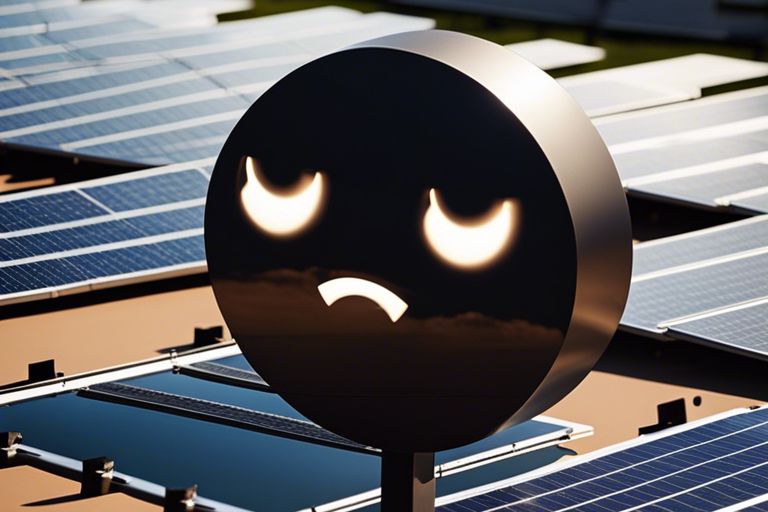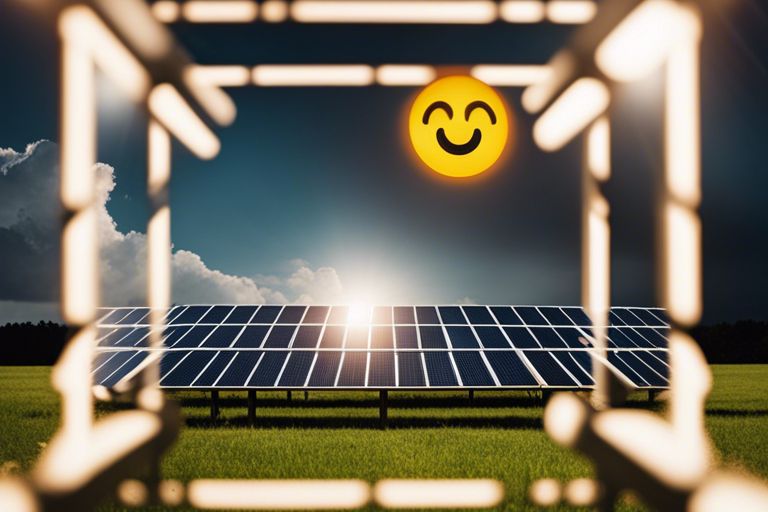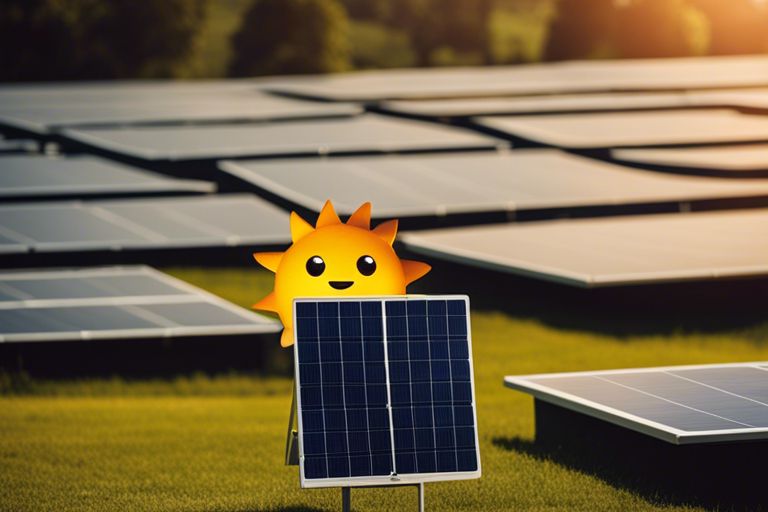Just like any other technology, solar power comes with its own set of drawbacks that you should be aware of. Despite its numerous benefits, such as being environmentally friendly and cost-effective in the long run, there are some negatives to consider as well. From the initial high installation costs to the intermittent nature of solar energy and the reliance on sunlight, there are factors to weigh before deciding if solar power is the right choice for your energy needs.

Key Takeaways:
- Intermittency: Solar power is reliant on sunlight, making it inconsistent and unreliable during nighttime or cloudy days.
- High initial costs: The installation of solar panels can be expensive, which may deter some individuals or businesses from adopting solar power.
- Space requirements: To generate a significant amount of electricity, large areas of land or roof space are needed for solar panel installation.
- Weather dependence: Solar power production can be affected by weather conditions such as rain, snow, or fog, reducing its efficiency.
- Impact on the environment: The production and disposal of solar panels can have negative environmental effects due to the use of materials like silicon and rare metals.
High Upfront Costs
Initial Investment
Your decision to invest in solar power comes with an initial cost that might seem daunting. Any investment in solar panels requires a substantial upfront payment that covers the equipment and installation expenses. This can be a significant barrier for many individuals or businesses considering solar energy.
Equipment and Installation Expenses
Upfront, you’ll need to cover the costs of solar panels, inverters, batteries (if you choose to go off-grid), wiring, and installation services. This can add up to a considerable sum, making the transition to solar power financially challenging for some. Plus, the quality of the equipment and installation can significantly impact the performance and longevity of your solar power system.
Intermittent Energy Source
Assuming you’ve read about The Advantages and Disadvantages of Solar Energy, you’re likely aware that a significant downside of solar power is its intermittency. This means that solar energy is not constantly available throughout the day or during certain weather conditions, making it an unreliable source of power at all times.
Dependence on Weather Conditions
Weather plays a critical role in the efficiency of solar panels. Cloud cover, rain, snow, or even just a particularly overcast day can significantly reduce the amount of sunlight reaching your solar panels, hence generating less electricity. This dependence on weather conditions can make it challenging to rely solely on solar energy for your power needs, especially during extended periods of inclement weather.
Unreliable Power Supply
Conditions such as nightfall, cloudy days, or seasonal changes can lead to an unreliable power supply when using solar energy. To combat this unpredictability, you may need to invest in energy storage solutions like batteries to store excess energy generated during sunny days for use when sunlight is limited. While these storage options can mitigate the issue to some extent, they add an extra cost to your solar power system.
Land Requirements
Many people believe that solar power is the key to a more sustainable future, but it’s crucial to consider the land implications of implementing large-scale solar projects.
Space Constraints
One of the drawbacks of solar power is the significant amount of land required for solar farms or arrays. As the demand for renewable energy sources grows, so does the need for land to host solar panels. This can lead to conflicts with agricultural activities or natural habitats, potentially displacing wildlife or altering ecosystems.
Environmental Impact on Wildlife Habitats
Impact
Another concern related to the land requirements of solar power is the impact on wildlife habitats. Large solar installations can disrupt local ecosystems, especially if they are located in sensitive areas. This can lead to habitat fragmentation, loss of biodiversity, and potential harm to species that call these areas home. It’s crucial to carefully plan and assess the environmental impact of solar projects to minimize harm to wildlife and their habitats.
Energy Storage Limitations
Battery Technology Constraints
Energy storage is a crucial component of a successful solar power system, as it allows you to store excess energy generated during the day for use when the sun isn’t shining. However, one of the major downsides of solar power is the limitations of current battery technology. While batteries have improved in recent years, they still face constraints when it comes to capacity, efficiency, and lifespan. This can lead to challenges in storing enough energy to power your home during periods of low sunlight, such as at night or during cloudy days.
Grid Integration Challenges
One of the key drawbacks of solar power is the challenges associated with integrating it into the existing grid infrastructure. While solar power is a clean and renewable source of energy, it can be unpredictable and intermittent due to factors like weather conditions. This can create issues with grid stability and reliability, as excess energy generated during peak sunlight hours may overload the grid, while insufficient energy production during off-peak times can lead to power shortages. As a result, grid integration challenges can limit the widespread adoption and scalability of solar power systems.
Constraints such as limited energy storage capacity and grid integration challenges can hinder the widespread adoption and effectiveness of solar power as a reliable energy source. Addressing these limitations through advancements in battery technology and grid infrastructure will be crucial in maximizing the potential of solar power as a sustainable energy solution for the future.
Maintenance and Repair Issues
Panel Cleaning and Inspection
Unlike traditional energy sources, solar panels require regular maintenance to ensure optimal performance. You will need to regularly clean the panels to remove dust, dirt, and debris that can accumulate on the surface. Additionally, inspecting the panels for any damage or defects is crucial to prevent any issues from affecting their efficiency.
Inverter Replacement and Upkeep
Repairing or replacing inverters can be a costly and time-consuming process. These crucial components are responsible for converting the DC electricity generated by the panels into AC electricity used in your home. If your inverter malfunctions, you may experience a significant decrease in energy production. Regular upkeep and potential replacement every 10-15 years are necessary to ensure your solar power system continues to function effectively.
To avoid unexpected repair costs, it’s recommended to establish a maintenance schedule and budget for potential repairs or replacements. By staying proactive and addressing issues promptly, you can prolong the lifespan of your solar power system and maximize its benefits in the long run.

Policy and Regulation Hurdles
Once again, despite the numerous benefits of solar power, there are some hurdles related to policy and regulations that can hinder its widespread adoption.
Lack of Standardization
For solar power to reach its full potential, there needs to be standardization in regulations across different regions. Currently, each area may have its own set of rules and requirements, making it difficult for solar companies to navigate and comply with varying regulations.
Inconsistent Government Incentives
With inconsistent government incentives for solar power installations, it can be hard for individuals and businesses to make long-term financial plans regarding solar investments. Some governments offer robust incentives, while others may provide little to no support, creating uncertainty in the market.
Plus, the frequent changes in government policies related to solar power can make it challenging for stakeholders to predict the future landscape of the solar industry. This uncertainty can deter potential investors and slow down the growth of solar power as a mainstream energy source.
Final Words
Taking this into account, it is important to recognize that while solar power has numerous benefits, there are also some downsides to consider. These negatives include the initial high cost of installation, the intermittent nature of sunlight, and the need for adequate storage solutions to provide continuous power. Additionally, the manufacturing and disposal of solar panels can have environmental impacts if not managed properly. It is important to weigh these factors when considering the transition to solar power in order to make an informed decision.
Q: Are there any environmental downsides to solar power?
A: While solar power is a clean and renewable energy source, the manufacturing and disposal of solar panels can have a negative impact on the environment. This includes the emission of greenhouse gases during production and the potential for toxic chemicals leaching into the soil and water if panels are not properly disposed of.
Q: What are the limitations of solar power?
A: Solar power can be intermittent due to weather conditions, such as clouds or night time, which can affect its reliability as a consistent energy source. Additionally, solar panels require a significant amount of space to generate a substantial amount of electricity, which may not be feasible in densely populated areas.
Q: Are there any economic disadvantages to using solar power?
A: While the costs of solar power have decreased in recent years, the initial investment in solar panels and installation can still be expensive for homeowners and businesses. In some cases, there may also be additional costs for storing excess energy or connecting to the grid, which can deter some people from switching to solar power.
